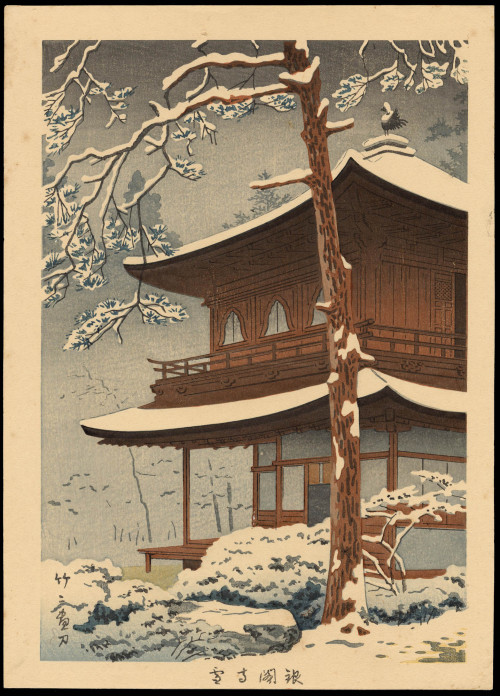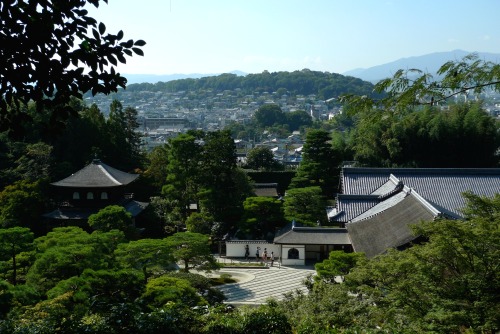#ginkakuji
A folded paper crane I received from a group of grade-schoolers in front of the silver pavillon 銀閣寺 in Kyoto 京都. I usually detest getting caught by them, but this group was kind of nice, so I decided to answer them properly. If you have been around Japan, you may know those groups of grade-schoolers swarming major tourist destination with their teachers to get some hands-on experience with foreigners, usually by presenting you some kind of questionnaire with always the same questions. They usually get really confused when a foreign-looking person answers with a place name in Japan confronted with the question “where you are living”. They took their usual “I’m with a gaijin”-photo and quickly dispersed, like they usually do after getting their desired answers. But hey, I got a crane.
Post link
Among the exchange students of Kyoto University 京都大学 there was always one big argument going on, when it came to popular tourist sights in the city. There where those who fancied Rokuon-ji 鹿苑寺, better known as Kinkaku-ji 金閣寺 or golden pavillon. No doubt, the thing is shiny and stuff… but yet another rebuilt. Burned down in 1950 by a buddhist monk (for those interested, see Mishima Yukio’s 三島由紀夫 famous novel “Kinkakuji” 金閣寺) it has been rebuilt in 1955.
Most of us actually prefered Jisho-ji 慈照寺 which you may know under his nickname ginkaku-ji 銀閣寺 or silver pavillon. The white sand garden, meant to reflect the moonlight, and the overall artistic understatement of the whole complex was a lot more compelling to me than the shiny golden counterpart. On top, as far as I know, the silver pavillon underwent massive restoration, but still is somewhat the original thing.
Post link
What’s In A Place: The everlasting ephemera of Kogetsudai
The first thing about Japanese temples, of course, is that they have a lot of history. That is to say, they are quite old, ranging from hundreds to well over a thousand years old. This doesn’t necessarily mean they’ve remained unchanged for all that time—most temples have undergone some amount of repairs, renovations, or additions, and some have even burned down and been rebuilt completely.
And then there’s Kogetsudai, the “moon viewing platform” in the garden of Ginkakuji. The 2-meter tall mountain-like structure is made from smooth, sculpted sand, which can easily be worn down by wind or rain. Yet, even as centuries pass, Kogetsudai remains as it was, thanks to the fact that people have been tending to it for all this time (you can see some videos of how it’s maintainedhereandhere). Kogetsudai is used as a motif for Kisei and Akari’s relationship in the epilogue because even though Kisei spends most of the main story believing it’s forces of destiny beyond her control that allows her and Akari to meet, the real reason they keep meeting is because they both keep going back—their desire to see each other like the fresh pressed sand.
Read the full main story of Natsu no Akari here!
Pre-order the standard edition print copy here!
Pre-order the deluxe edition print copy here!
Post link

Snow at Ginkakuji Temple, by Asano Takeji (1930).





